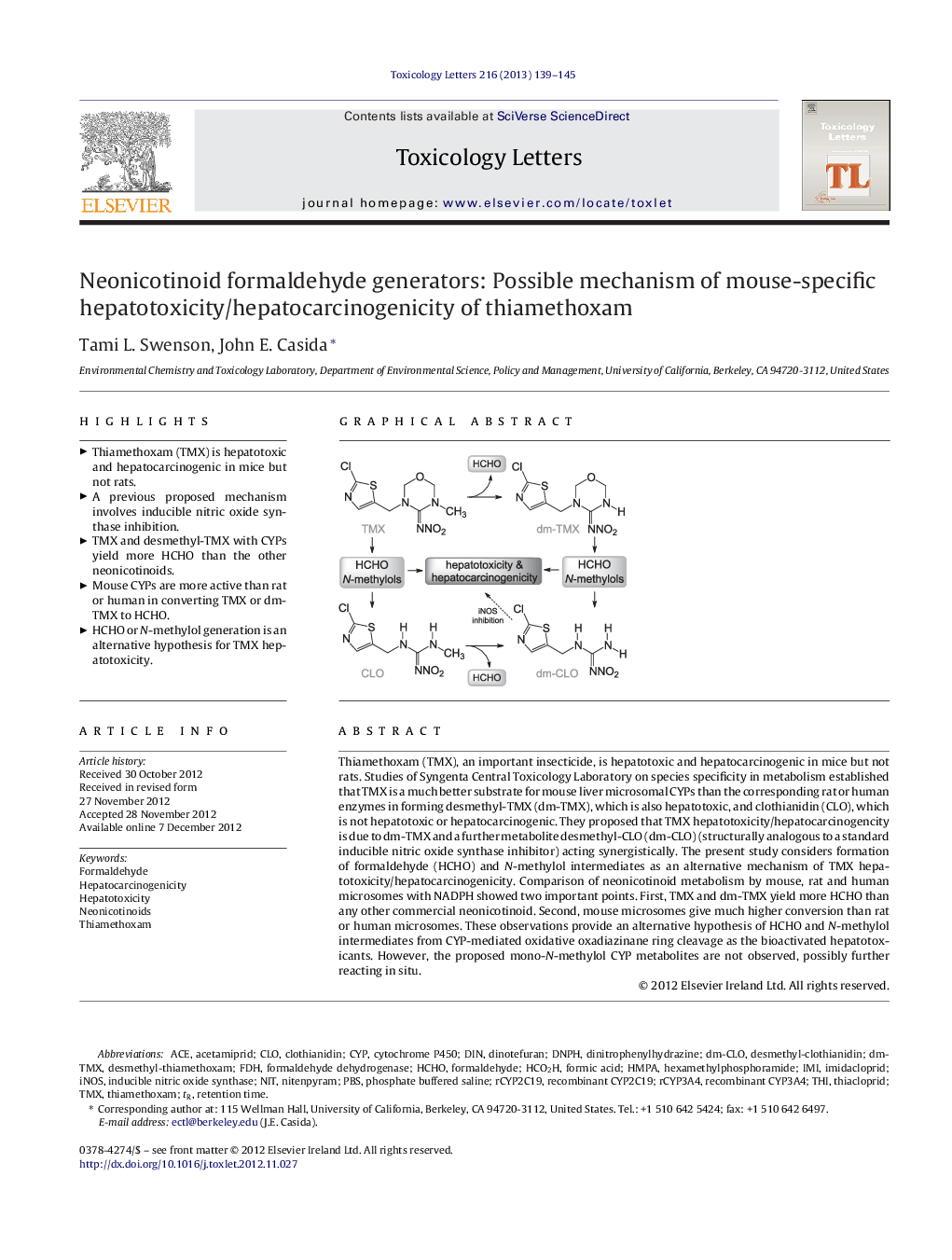| کد مقاله | کد نشریه | سال انتشار | مقاله انگلیسی | نسخه تمام متن |
|---|---|---|---|---|
| 2599463 | 1562635 | 2013 | 7 صفحه PDF | دانلود رایگان |

Thiamethoxam (TMX), an important insecticide, is hepatotoxic and hepatocarcinogenic in mice but not rats. Studies of Syngenta Central Toxicology Laboratory on species specificity in metabolism established that TMX is a much better substrate for mouse liver microsomal CYPs than the corresponding rat or human enzymes in forming desmethyl-TMX (dm-TMX), which is also hepatotoxic, and clothianidin (CLO), which is not hepatotoxic or hepatocarcinogenic. They proposed that TMX hepatotoxicity/hepatocarcinogencity is due to dm-TMX and a further metabolite desmethyl-CLO (dm-CLO) (structurally analogous to a standard inducible nitric oxide synthase inhibitor) acting synergistically. The present study considers formation of formaldehyde (HCHO) and N-methylol intermediates as an alternative mechanism of TMX hepatotoxicity/hepatocarcinogenicity. Comparison of neonicotinoid metabolism by mouse, rat and human microsomes with NADPH showed two important points. First, TMX and dm-TMX yield more HCHO than any other commercial neonicotinoid. Second, mouse microsomes give much higher conversion than rat or human microsomes. These observations provide an alternative hypothesis of HCHO and N-methylol intermediates from CYP-mediated oxidative oxadiazinane ring cleavage as the bioactivated hepatotoxicants. However, the proposed mono-N-methylol CYP metabolites are not observed, possibly further reacting in situ.
Figure optionsDownload as PowerPoint slideHighlights
► Thiamethoxam (TMX) is hepatotoxic and hepatocarcinogenic in mice but not rats.
► A previous proposed mechanism involves inducible nitric oxide synthase inhibition.
► TMX and desmethyl-TMX with CYPs yield more HCHO than the other neonicotinoids.
► Mouse CYPs are more active than rat or human in converting TMX or dm-TMX to HCHO.
► HCHO or N-methylol generation is an alternative hypothesis for TMX hepatotoxicity.
Journal: Toxicology Letters - Volume 216, Issues 2–3, 4 February 2013, Pages 139–145